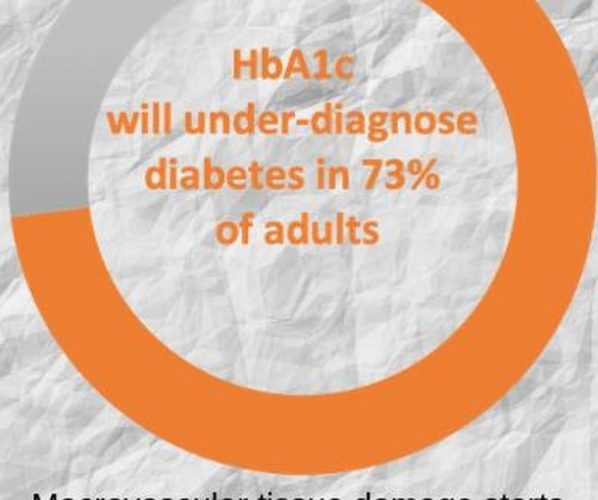Research shows that patients in the prediabetic range need to be treated in order to prevent tissue damage. The HbA1c test has a significant tendency to miss cases of diabetes as compared to the oral glucose tolerance test (OGTT)
Patients should be treated in the prediabetic range because macrovascular tissue damage is occurring from HgBA1C of 5.7 to 6.5. Reversing diabetes while it is still prediabetes is safe, cost-effective, and disease-modifying.
Increased cardiovascular risk begins prior to the development of persistent hyperglycemia, due to insulin resistance (Stern, 1996; Haffner and D’Agostino,1999). Macrovascular damage has already occurred with the onset of insulin resistance, while microvascular damage increases with the onset of hyperglycemia. The United Kingdom Prospective Diabetes Study (UKPDS) analyzed more than 4,000 types 2 diabetes patients who were aggressively treated and followed for up to 15 years. Those in the intensely treated group had a significantly lower rate of progression of microvascular complications than did patients receiving standard care. Rates of macrovascular disease were only reduced in the metformin-monotherapy area, where the risk of myocardial infarction was significantly decreased.






